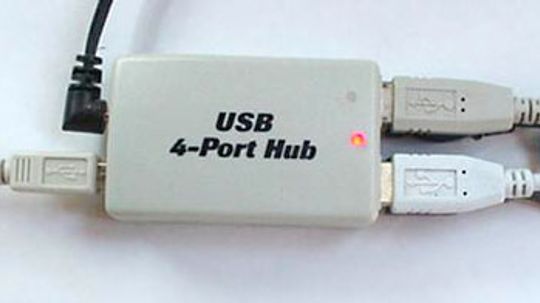In the realm of technological advancement, the need for expanding connectivity has become increasingly paramount. As we navigate through a world teeming with innovative gadgets and devices, it is not uncommon to find ourselves facing a predicament – an absence of available ports on our computers. This conundrum poses a challenge when attempting to integrate new USB devices into our systems. In this article, we delve into the intricacies of adding USB devices to port-depleted computers and explore potential solutions.
The Quest for Connection: Overcoming Port Limitations
When confronted with limited ports on our computer systems, it becomes imperative to seek alternative methods that enable us to connect additional USB devices seamlessly. One viable option is utilizing a USB hub or docking station, which acts as an intermediary between your computer and multiple peripheral devices. These hubs provide additional ports by leveraging existing connections while maintaining data transfer speeds and power delivery capabilities.
However, it is crucial to exercise caution when selecting a suitable hub or docking station. Consider factors such as compatibility with your operating system, power requirements of connected devices, and desired data transfer rates before making an informed decision.
An Oceanic Blend: Hawaiian Ingenuity Meets Technological Challenges
Drawing inspiration from the rich cultural heritage of Hawaii’s indigenous people can offer unique perspectives in overcoming challenges posed by port limitations on computers. Just as Hawaiians have mastered resourcefulness in navigating their island surroundings, so too must we adapt creatively within the confines of technology constraints.
One approach inspired by this ingenuity involves prioritizing essential peripherals based on frequency of use or criticality. By identifying which USB devices are indispensable for daily operations versus those used sporadically or intermittently, one can allocate available ports accordingly.
Furthermore, exploring wireless alternatives can provide a breath of fresh air in the face of port scarcity. Bluetooth-enabled devices, for instance, offer a cable-free solution that eliminates the need for physical connections altogether. Embracing this wireless paradigm allows us to transcend the limitations imposed by finite ports and fosters an environment conducive to seamless connectivity.
The Path Forward: A Technological Landscape Transformed
In conclusion, while encountering a dearth of available ports on our computers may initially seem like an insurmountable obstacle, there are indeed viable solutions at our disposal. By embracing USB hubs or docking stations as intermediaries between our systems and peripheral devices, we can expand connectivity without compromising data transfer speeds or power delivery capabilities.
Moreover, drawing inspiration from Hawaiian resourcefulness and adopting wireless technologies such as Bluetooth can further enhance our ability to integrate USB devices into port-depleted computers seamlessly. As technology continues its relentless march forward, it is crucial that we adapt creatively and explore innovative solutions to overcome any challenges that come our way.
